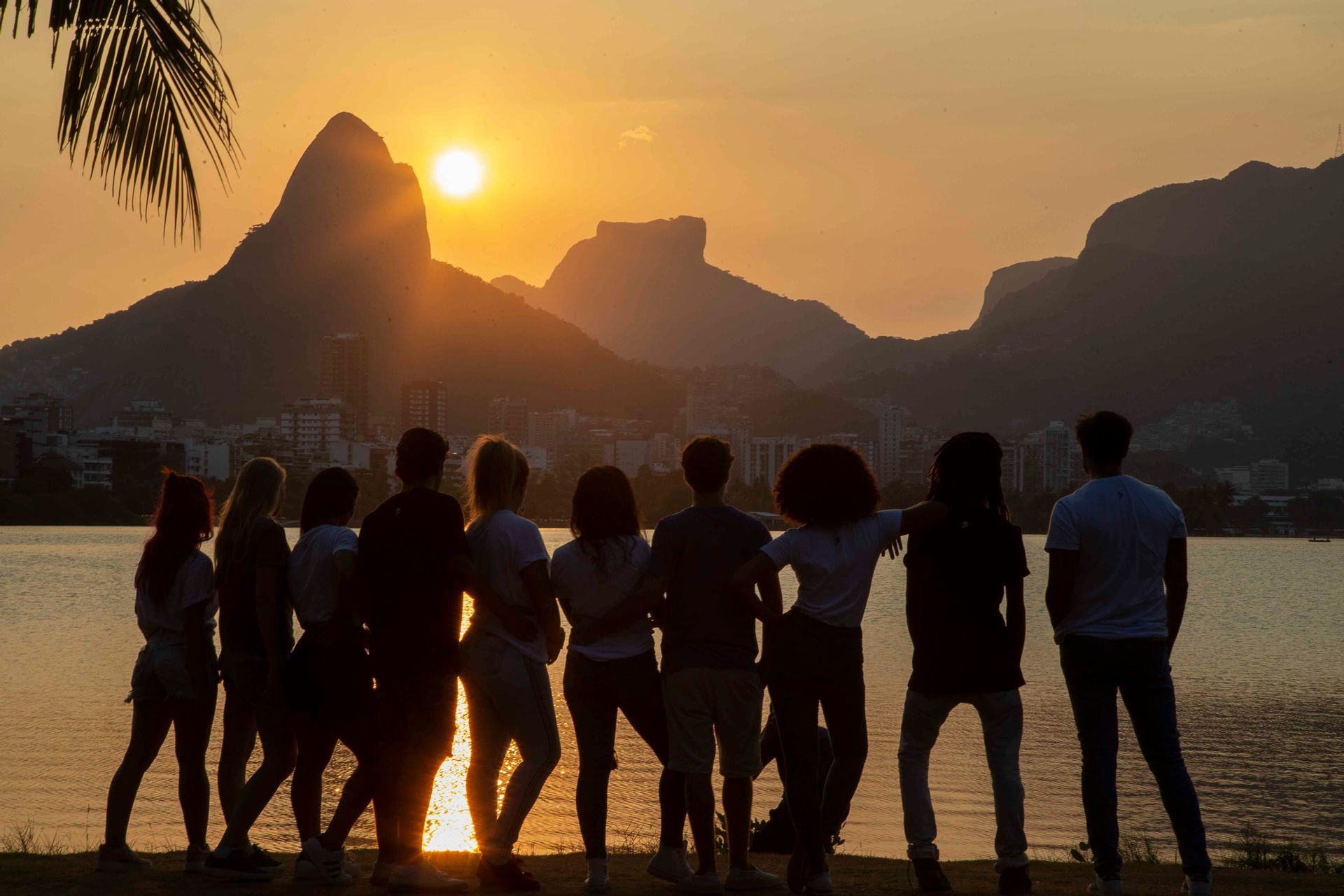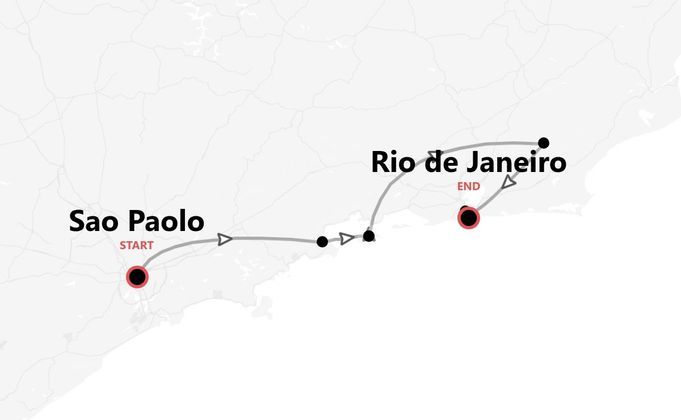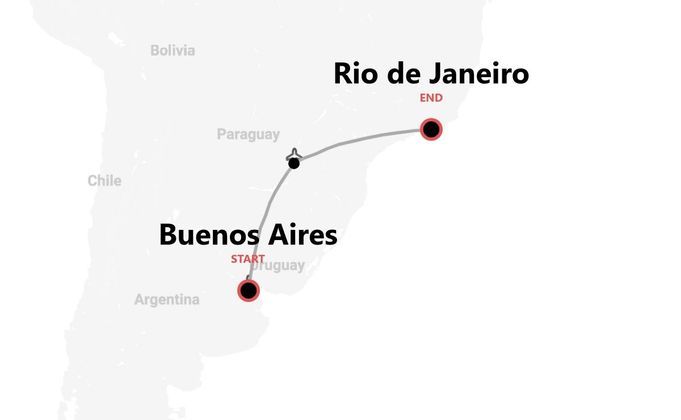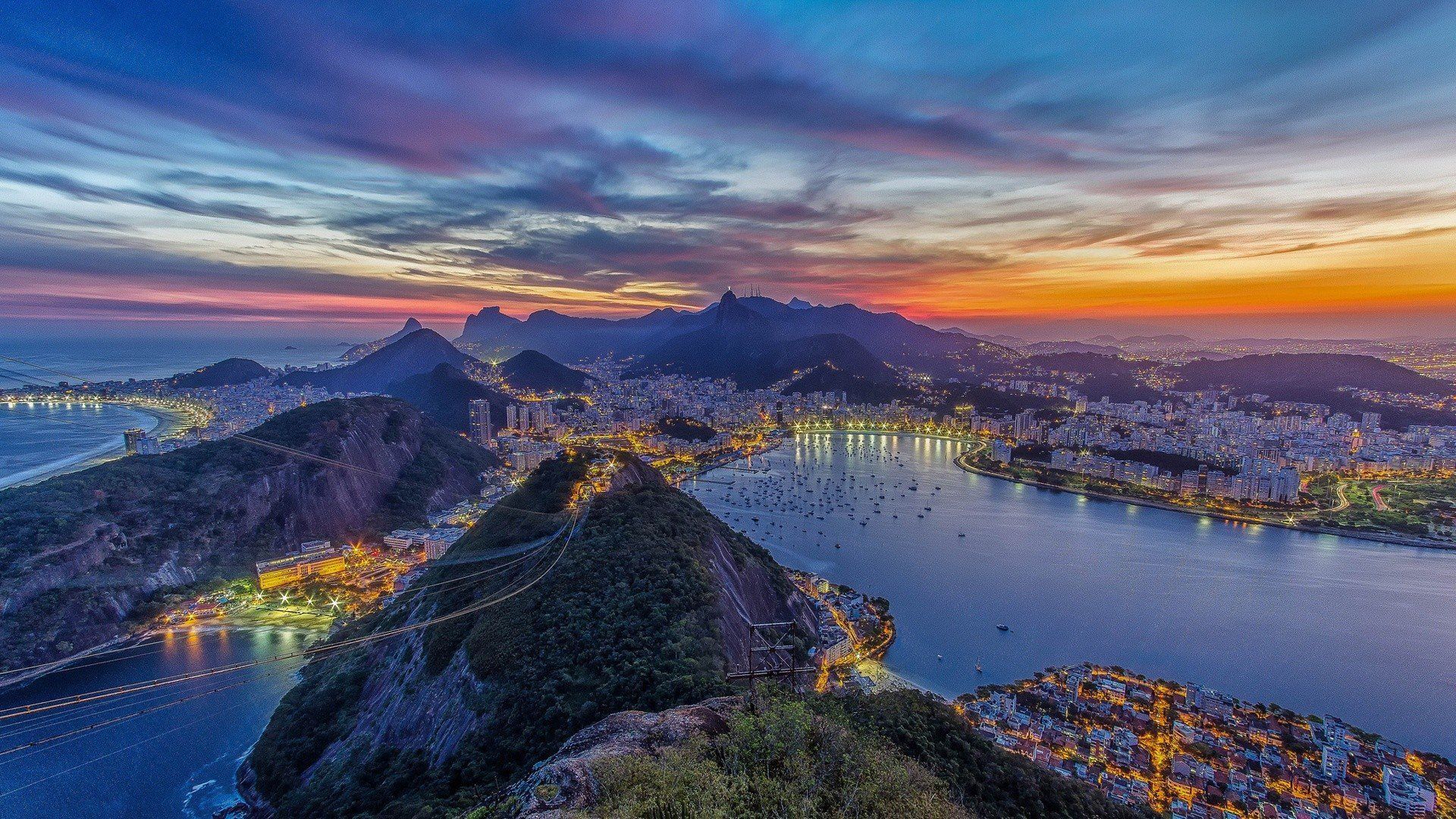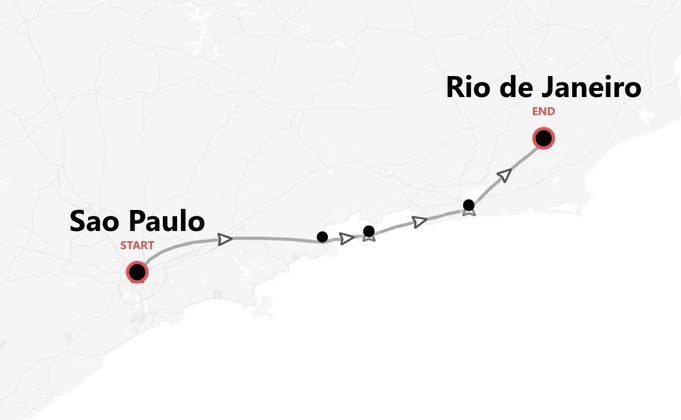
Group trips to Brazil
Our organized trips to Brazil
More than just the dazzling beat of carnival, Brazil unfurls as a continent of boundless natural wonder and exuberant cultural fusion. From the colossal roar of Iguazu Falls, a breathtaking natural spectacle, to the iconic shores of Rio de Janeiro and the vibrant, colonial heart of Salvador's Pelourinho, where history and rhythm intertwine, Brazil captivates. It invites curious explorers and passionate adventurers to immerse themselves in its vibrant spirit and rediscover the joy of discovery.
FAQs about Brazil
If you are a UK citizen, to find out the entry requirements for Brazil, you can check this informational page from our partner Sherpa. If you need a visa, you can apply for it through Sherpa. If you are not a UK citizen, you can still use Sherpa by changing the nationality in the 'Passport' section.
Before traveling, always remember to check the government website of your country of origin for updates on the entry requirements for Brazil – you wouldn’t want to stay home due to a bureaucratic detail!
- UK residents: review the FCDO Travel Advice.
- US residents: consult the US Department of State Travel Advice.
- Other residents: refer to your government or local consulate's travel advice.
Brazil covers multiple time zones, so it varies depending on where you are:
- Brasília Time (BRT): This is the most common, and it's 3 hours behind GMT. If it's 12pm in the UK, it will be 9am in Brasília. For the USA, if it's 12pm EST, it will be 2pm in Brasília.
- Amazon Time (AMT): 4 hours behind GMT. If it's 12pm in the UK, it's 8am in Manaus. For the USA, if it's 12pm EST, it will be 1pm in Manaus.
- Fernando de Noronha Time (FNT): This is 2 hours behind GMT. If it's 12pm in the UK, it will be 10am in Fernando de Noronha. For the USA, if it's 12pm EST, it will be 3pm there.
Note that Brazil does not currently observe daylight saving time.
Brazil uses the Brazilian Real (BRL) as its currency. The exchange rate can fluctuate, but as a rough guide, 1 GBP is about 7 BRL, 1 USD is around 5 BRL, and 1 EUR is approximately 6 BRL. You can exchange currency at banks, exchange bureaus, and some hotels in major cities. It's always a good idea to compare rates and fees to get the best deal.
In Brazil, you can use credit cards, debit cards, and cash for most transactions. Credit and debit cards, especially Visa and Mastercard, are widely accepted in cities and tourist areas. However, it's always a good idea to carry some cash for smaller establishments or markets where cards might not be accepted. ATMs are available for cash withdrawals, but check with your bank about international transaction fees. Mobile payments like Apple Pay and Google Pay are also becoming more common. Remember to inform your bank of your travel plans to avoid any issues with card usage.
In Brazil, tipping is not mandatory, but it is appreciated. Service charges are often included in the bill at restaurants, typically around 10 percent. If it's not included, you might want to leave a tip of the same amount if you’re happy with the service. For other services like taxis or hotel staff, rounding up the fare or giving a small tip is a kind gesture. Keep in mind that tipping is less formalized than in the USA, so feel free to tip based on your satisfaction with the service.
In Brazil, you can find Wi-Fi in most hotels, cafes, and restaurants, especially in urban areas. However, coverage might be spotty in rural regions. For more reliable internet access, buying a local SIM card is a great idea. Major providers include Vivo, Claro, and TIM. These offer various prepaid plans that will keep you connected throughout your trip. If your phone supports e-SIMs, you can also explore e-SIM data plans for convenience. This way, you won't have to rely solely on Wi-Fi and can have internet access while on the go.
In Brazil, the official language is Portuguese. It's a bit different from the Portuguese spoken in Portugal, with some unique expressions you might hear or use during your trip. Here are a few handy ones:
- Hello: Olá
- Thank you: Obrigado (if you're male), Obrigada (if you're female)
- Please: Por favor
- How much?: Quanto custa?
- Good morning: Bom dia
Knowing a few phrases can make your trip more enjoyable and help you connect with locals!
In Brazil, the plugs are type N with two round pins and a grounding pin, similar to type C but with an added third pin. The voltage is generally 127/220V, and the frequency is 60Hz. Since these plugs and voltage might be different from what you're used to in Europe or the USA, it's a good idea to bring a universal adapter to ensure your devices can be charged safely.
The main religion in Brazil is Christianity, with Roman Catholicism being the most widely practiced. Approximately 65% of the population identifies as Roman Catholic. Besides Catholicism, Protestantism is also significant, with about 22% of Brazilians following various Protestant denominations, including Evangelicals, Pentecostals, and Baptists. Important religious holidays in Brazil include Good Friday, Easter, and Christmas, which are celebrated nationwide with various traditions and festivities.
Brazil is a diverse country with various climates, so it's good to be prepared for different conditions. Here's a helpful list of what to pack in your backpack:
-
Clothing:
- Lightweight shirts and shorts
- A light jacket or sweater for cooler evenings
- Swimwear
- Long pants for mosquito protection
-
Shoes:
- Comfortable walking shoes
- Sandals or flip-flops
- Waterproof shoes if visiting during the rainy season
-
Accessories and Technology:
- Sunglasses and a hat
- A power bank
- Camera or smartphone
- Universal adapter
-
Toiletries and Medication:
- Sunscreen and insect repellent
- Personal hygiene items
- Travel-sized first aid kit
- Common travel medication like pain relievers and motion sickness pills
Brazil's climate can vary greatly, so pack according to the season and region you'll be visiting.
Brazil's weather varies greatly depending on the region, so here’s a quick guide:
- Amazon Rainforest Area (Manaus): Hot and humid all year, with a rainy season from December to May. Best time to visit is June to November.
- Northeast Coast (Salvador, Recife): Warm and tropical climate with a wet season from April to July. Best time to visit is September to March.
- Central Brazil (Brasília): Tropical savanna climate, with a rainy season from October to April. Best time to visit is May to September.
- Southeast (Rio de Janeiro, São Paulo): Warm summers and mild winters, with rain mostly in the summer months from December to March. Best time to visit is April to October.
- South (Porto Alegre): Subtropical climate with hot summers and cool winters. Rain is more evenly distributed throughout the year. Best time to visit is March to May or September to November.
